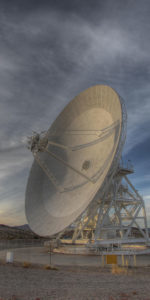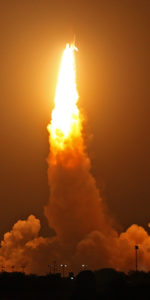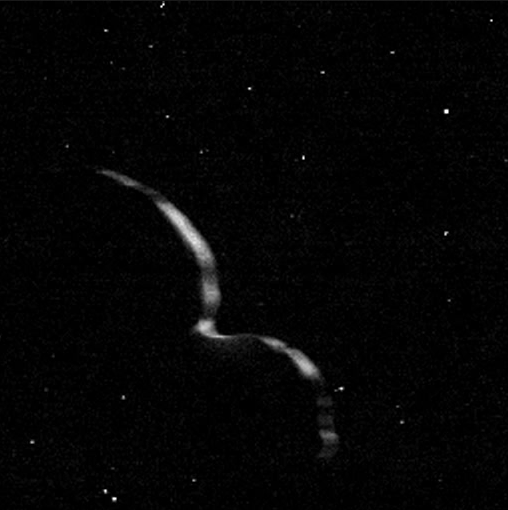
When New Horizons sent back its first images of the Kuiper Belt Object (KBO) called 2014 MU69 (aka Ultima Thule) last month – by far the most distant object ever visited by a spacecraft so far – scientists and the public alike were amazed. Scientists had some ideas as to what to expect, but as always in planetary exploration, there were surprises. The photos showed an object consisting of two “lobes,” one larger than the other, connected together by a very thin “neck” of material – they looked like they were barely touching. It looked like a snowman.
Now, some additional images are revealing more detail and a better look at 2014 MU69’s actual appearance. The lobes are much less spherical and flatter than first thought; the smaller one looks more like a dented walnut and the larger one more like a pancake! 2014 MU69 is weird. There is still some uncertainty as to the exact shape, but the new model is a much better depiction.
“This really is an incredible image sequence, taken by a spacecraft exploring a small world four billion miles away from Earth,” said mission Principal Investigator Alan Stern, of Southwest Research Institute. “Nothing quite like this has ever been captured in imagery.”
The new images are the final “farewell” views of 2014 MU69, taken by New Horizons about 10 minutes after closest approach. They show the object illuminated along one edge by the distant Sun.
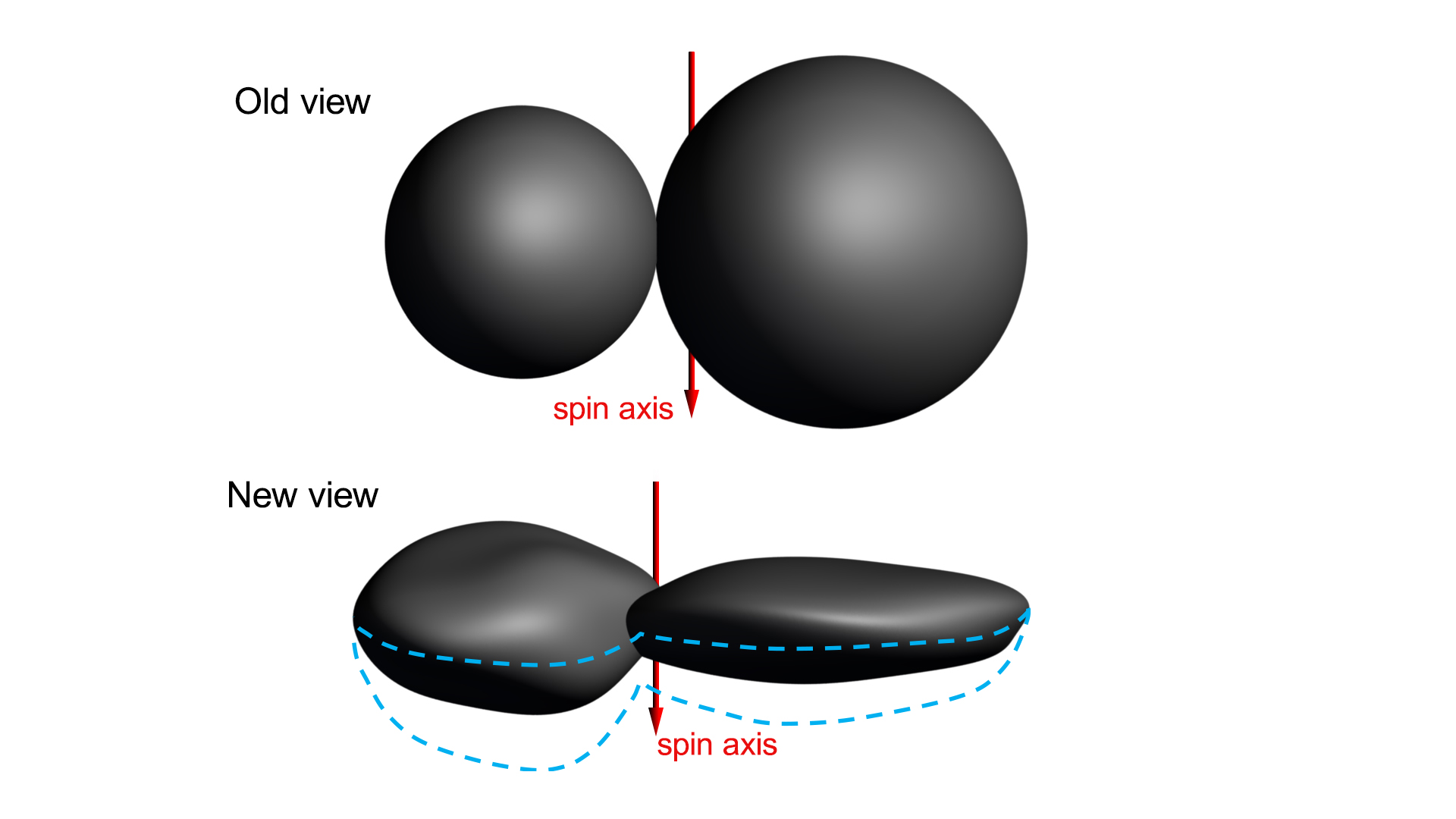
Scientists strung 14 of these images together to create a short “movie,” which helped to reveal the more accurate shape.
“We had an impression of Ultima Thule based on the limited number of images returned in the days around the flyby, but seeing more data has significantly changed our view,” Stern said. “It would be closer to reality to say Ultima Thule’s shape is flatter, like a pancake. But more importantly, the new images are creating scientific puzzles about how such an object could even be formed. We’ve never seen something like this orbiting the Sun.”
Earlier photos released showed 2014 MU69 during the approach by New Horizons, which were taken from a different angle than these new ones. The central frame of the sequence was taken on Jan. 1 at 05:42:42 UT (12:42 a.m. EST), when New Horizons was 5,494 miles (8,862 kilometers) beyond 2014 MU69, and 4.1 billion miles (6.6 billion kilometers) from Earth.
The blurring in the individual frames is the result of a relatively long exposure time that was used during the rapid scan of the camera to boost the camera’s signal level. But later, the science team combined and processed the images to remove the blurring and sharpen the thin crescent.
Scientists were also able to better define the shape of the object – shape-modeling – by looking at the background stars and seeing which ones “blinked out” momentarily as the object passed in front of them.
“The shape model we have derived from all of the existing Ultima Thule imagery is remarkably consistent with what we have learned from the new crescent images,” said Simon Porter, a New Horizons co-investigator from the Southwest Research Institute, in charge of the shape-modeling effort.
Scientists will now be busy trying to figure out how this bizarre shape formed. 2014 MU69, like all KBOs, is a small rocky relic left over from when the Solar System first formed billions of years ago. The remarkably flattened appearance is one of the oddest shapes yet seen anywhere in the Solar System.
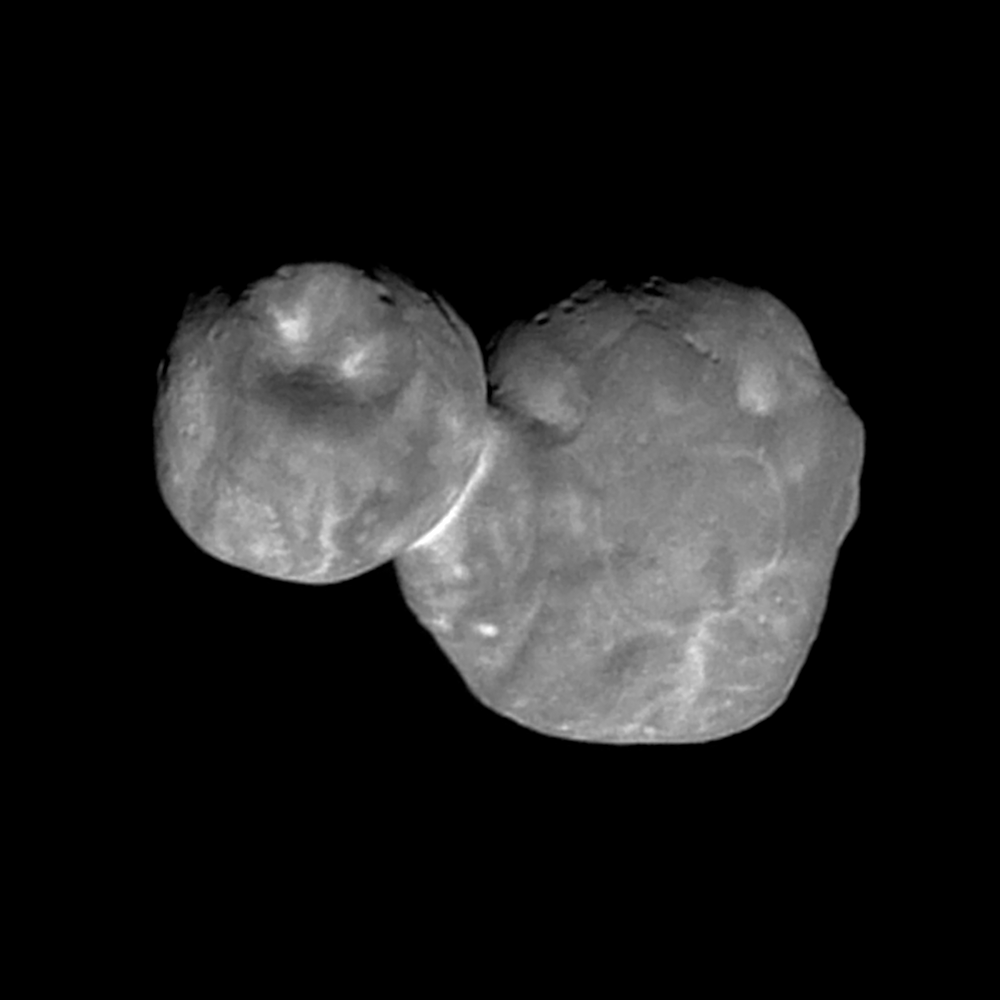
“While the very nature of a fast flyby in some ways limits how well we can determine the true shape of Ultima Thule, the new results clearly show that Ultima and Thule are much flatter than originally believed, and much flatter than expected,” noted Hal Weaver, New Horizons project scientist from the Johns Hopkins Applied Physics Laboratory. “This will undoubtedly motivate new theories of planetesimal formation in the early solar system.”
There are still many more images of 2014 MU69 left to be sent back to Earth, over the next days, weeks and months, including the highest resolution images of the surface of the object. Another stunning high-resolution image was released on January 24. As seen so far, it has an unusual mottled appearance, with bright spots and large and small pits, which may or may not be craters. The “neck” is one of the oddest features, which looks like some tied a bright white ribbon around it.
2014 MU69 is the first KBO to be explored by New Horizons since the epic first flyby of Pluto and its moons back in July 2015. Scientists are planning to possibly visit one or two more still in the years ahead as long as New Horizons remains healthy.
More information about New Horizons is available on the mission website.
FOLLOW AmericaSpace on Facebook and Twitter!
Missions » New Horizons »



